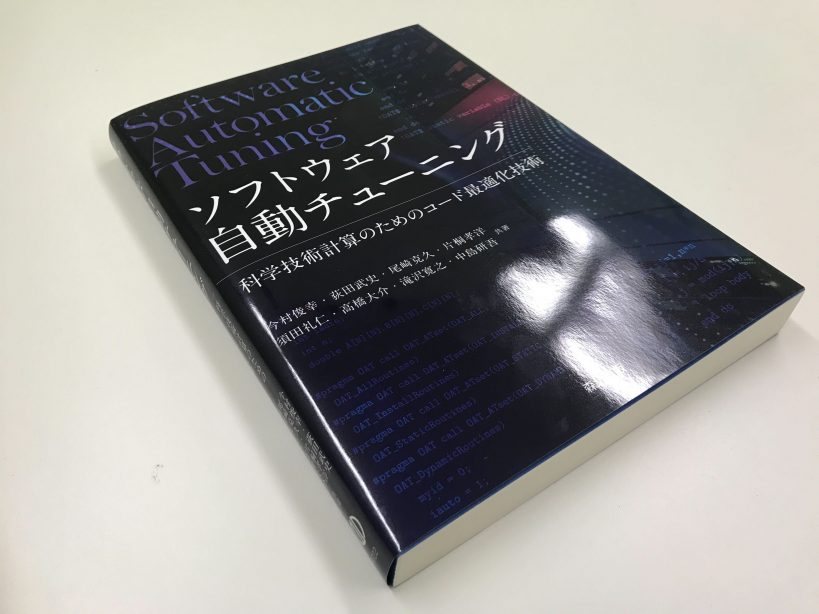あけましておめでとうございます。滝沢研修士1年の菅原です。
昨年の12/3から新たに高橋慧智助教授が滝沢研究室に所属するということで、忘年会兼高橋先生の歓迎会を行いました!
まだ対面での食事はできないためオンライン上で開催する運びとなりましたが、Gatherを用いた飲み会は何度か行っているので皆さん楽しんでいました!
新年を迎え、また新たな気持ちで研究に励んでいけるといいですね。
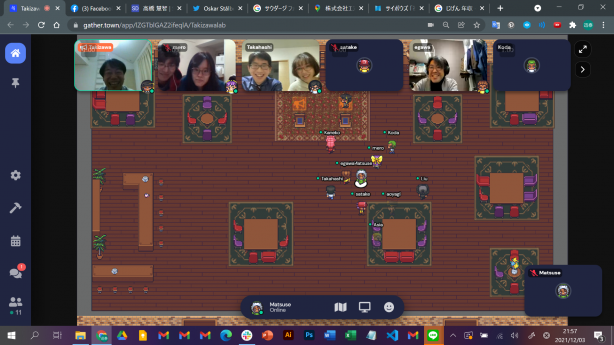
あけましておめでとうございます。滝沢研修士1年の菅原です。
昨年の12/3から新たに高橋慧智助教授が滝沢研究室に所属するということで、忘年会兼高橋先生の歓迎会を行いました!
まだ対面での食事はできないためオンライン上で開催する運びとなりましたが、Gatherを用いた飲み会は何度か行っているので皆さん楽しんでいました!
新年を迎え、また新たな気持ちで研究に励んでいけるといいですね。

どうも~ M2のMingluです~
12月10日から12日にかけて12th International Symposium on Parallel Architectures, Algorithms and Programming (PAAP’21)が開催されました。
PAAPは学術界や産業界の科学者や技術者が、並列アーキテクチャ、アルゴリズム、プログラミング技術などのあらゆる側面における研究成果や開発活動を発表する国際会議です。
学会の詳細はここからご覧ください。
当研究室ではMingluがtrack05: Big Data Processing and Deep Learningにて研究成果を発表しました。
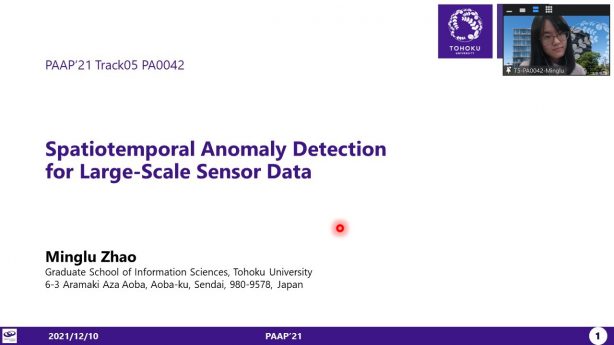
Hello there. This is Minglu.
12th International Symposium on Parallel Architectures, Algorithms and Programming (PAAP’21) was held from Dec. 10th to 12th.
PAAP is an international conference for scientists and engineers in academia and industry to present their research results and development activities in all aspects of parallel architectures, algorithms and programming techniques.
You can find the details here. Program
In our lab., Minglu had a presentation at the track05: Big Data Processing and Deep Learning.

M1の金子です。3月ごろに紹介した研究室のサーバ”muffin”ですが、この数か月で少し面白い構成になったので紹介したいと思います。
3月当時は、muffinはFPGAのstratix10用のサーバとしてスタートしましたが、GPUのNVIDIA A100、そしてVEのSX-Aurora TSUBASA Type 20Bの合計3種類のアクセラレータを搭載した珍しい構成のマシンになりました。近年の異種プロセッサを複数搭載し、複雑化するHPCシステムの情勢を反映したような構成になり、今後の異種プロセッサ混合システムの研究で活躍してくれそうです。
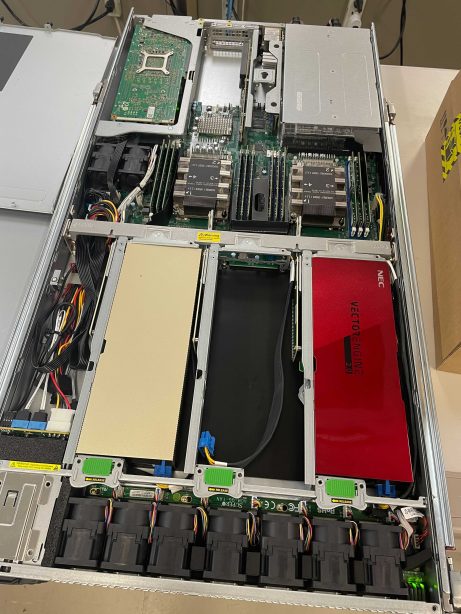
左手前に見えるのがGPU、右手前がVE、左奥に見えるのがFPGAです。スロットは5カ所ありますが、ソーシャルディスタンスを保って配置されています。まだ挿せる場所が2か所あって、さらなるグレードアップもできそう!…な気もしますが、電源容量の問題でそう簡単にはいかず、今後どうなるかはまだわかりません。
続報があればまた記事にします
今年の11月14日から19日にかけて、International Conference for High-Performance Computing, Networking, Storage, and Analysis (SC21)が開催されました。
昨年同様、東北大学はブースページを設け、研究内容に関するポスターやビデオなどを展示しました。
ブースの詳細情報はこちらご覧ください。
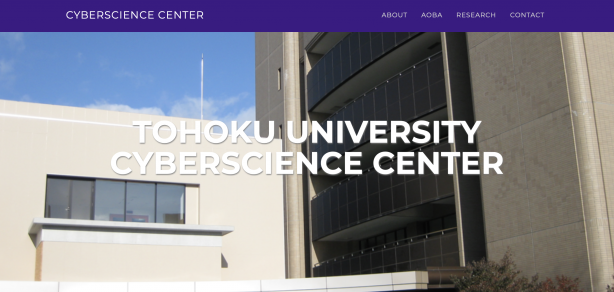
今年は研究室メンバーの発表はありませんが、研究室の学生は積極的に学会に参加し、研究室セミナーで気になったトピックや発表内容を共有しました。
| 気になったトピック |
| A high-performance tensor-based simulator for random quantum circuits [1] |
| An extension of the Message Passing Interface to enable high-performance implementations of distributed quantum algorithms [2] |
|
A unified programming model for constraint satisfaction problems that can be mapped to both quantum circuit and annealing devices through QUBOs [3] |
| A scalable performance prediction toolkit for GPUs [4] |
| In-depth analyses of unified virtual memory system for GPU accelerated computing [5] |
今後、このようなトップレベルの学会で、研究室のメンバーが発表できるようになることが期待されています。
参考文献
The International Conference for High-Performance Computing, Networking, Storage, and Analysis (SC21) was held from Nov. 14th to 19th this year.
Similar to last year, Tohoku University had a booth page including posters and videos about our research.
The detailed booth information is shown here.

Although there is no presentation made by lab members this year, students in our lab still actively attended the conference and shared interesting topics or presentations in the lab seminar.
| Interesting Topics |
| A high-performance tensor-based simulator for random quantum circuits [1] |
| An extension of the Message Passing Interface to enable high-performance implementations of distributed quantum algorithms [2] |
|
A unified programming model for constraint satisfaction problems that can be mapped to both quantum circuit and annealing devices through QUBOs [3] |
| A scalable performance prediction toolkit for GPUs [4] |
| In-depth analyses of unified virtual memory system for GPU accelerated computing [5] |
Hope that in the future, there will be opportunities for our lab members to present research at such top-level conferences.
Reference
I am Shuhei Sugawara, a first year Takizawa trainee.
In light of the recent situation, we have created a system to record the arrival and departure status of students in the laboratory, and have recently started operation.
Previously, we had to write down the entry and exit times of each person on a spreadsheet, but now we can use the touch keys in the lab to automatically fill in the information, which I think is much easier and less time-consuming.
It was more difficult than I expected due to various problems and improvements before the system was up and running, but it is now working successfully thanks to the cooperation of the lab members. Thank you very much!
For now, only lab members can use it, but we are planning to improve it so that guests can also use it, so please try it out when you visit our lab!
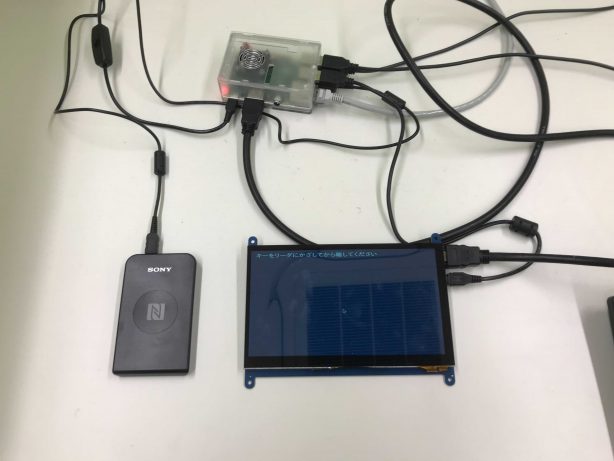
滝沢研修士1年の菅原駿平です。 昨今の情勢を鑑みて、研究室への入退室状況の記録を取るためのシステムを作り、先日稼働を開始しました。 これまではスプレッドシートに各々の入退室時間を記入していましたが、研究室のタッチキーを用いて自動で記入できるようになったため、手間が減って楽になったと思います。 稼働までに様々な不具合や改善点があり思ったより苦戦してしまいましたが、研究室メンバーの協力により現在は無事動作しています。ありがとうございます! 今はまだ研究室メンバーしか使うことができませんが、ご来賓の方も使えるよう改善する予定なので、研究室にお越しの際にはぜひ使ってみてください!

こんにちは.M2 のしも (古畑) です。とうとう当研究室にも例の黄色い高水圧洗浄機がやってきました。早速、組み立てて使ってみました。なんということでしょう!床を覆っていた埃がなくなって、きれいな床が見えますよ!ピカピカです!これからの掃除がお手軽になりそうですね。今後の活躍にも注目です!
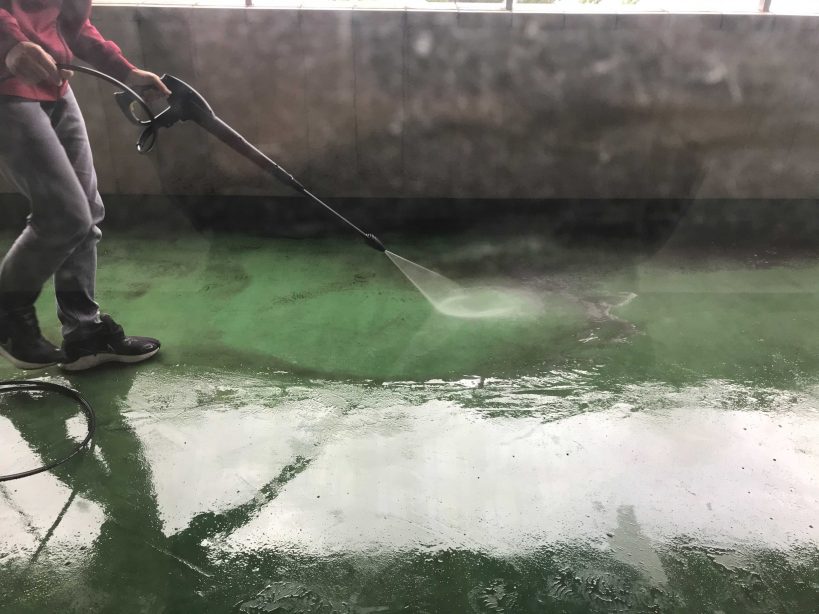
The book “Software Auto-Tuning: Code Optimization Techniques for Scientific and Technical Computing” authored by Prof. Hiroyuki Takizawa (co-author) will be released soon! The book introduces the principles and usage of each tool for software auto-tuning. We recommend this for your research or lectures to improve your work!
https://www.morikita.co.jp/index.php/books/mid/087221
